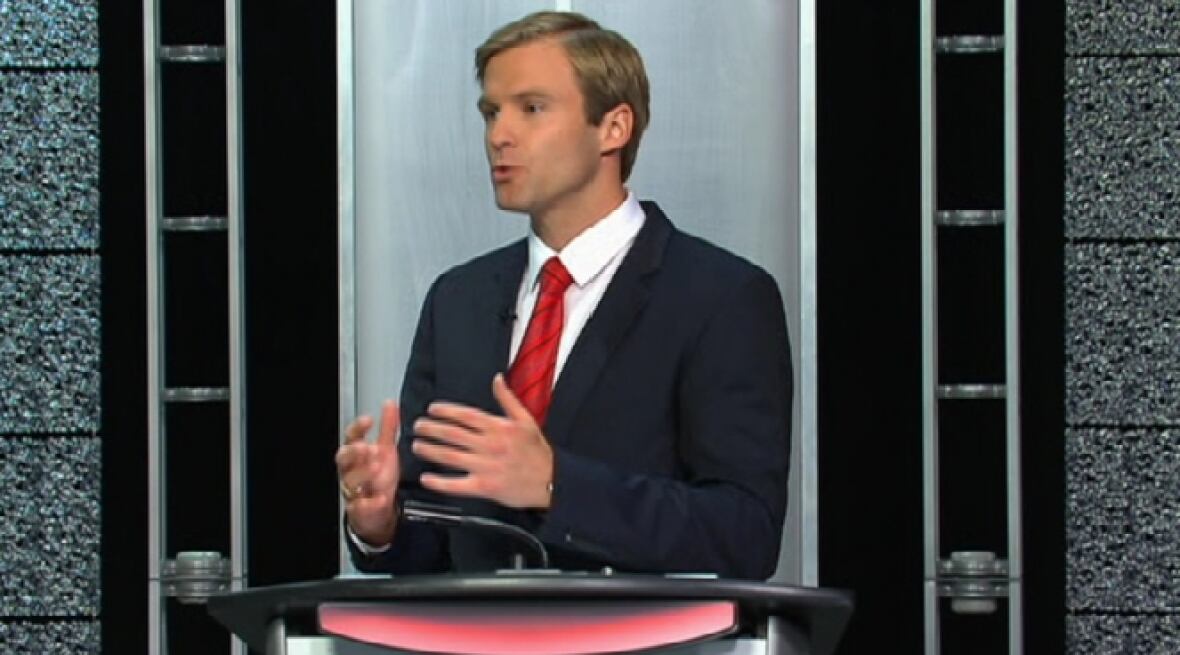J.P. Lewis: David Alward stuck on defensive in leaders' debate
New Brunswick's 5 political leaders participated in the CBC's English debate on Tuesday
Fifteen years ago, as a relative political unknown, a 33-year-old Progressive Conservative leader faced sitting Liberal premier Camille Theriault and veteran NDP leader Elizabeth Weir in the 1999 party leaders’ debate.
The evening represented a shift in momentum in the campaign; the Tories, once down in the polls by 20 points, began to slowly gain the support that would lead to a majority government.
However, this example is a clear anomaly. Political debates of any significance are not a common occurrence.
Yes, pundits and the press love to cite the 1960 John F. Kennedy-Richard Nixon debate, the 1984 Brian Mulroney-John Turner “you had an option, sir” exchange or more recently, Republican Presidential candidate Rick Perry forgetting the third federal agency he would cut if elected.

And that’s how most participants of debates want it — calmly stay focused on the audience at home, remember to tell anecdotes involving voters with real names (“I was talking to Karen Mellow in Sackville…”) and stick to your script that you, your candidates and your party handlers can spin for the next 24 hours.
I won’t go as far as Kim Campbell to say that election campaigns aren’t the time to talk about serious policy issues, but sadly election debates are normally more about politics than policy.
Put simply, leaders’ debates are about three things for the parties: 1) turning things around, 2) keeping things going or 3) getting things going.
The five leaders in Tuesday night’s English debate can easily fit in these three categories — David Alward (turning things around), Brian Gallant (keeping things going) or Dominic Cardy, David Coon and Kris Austin (getting things going).
Alward stuck in the middle
This provides us with a framework to assess each leader’s performance.

Throughout the debate, Alward had to pivot side-to-side, fending off rhetorical attacks from the four other leaders.
All of the other leaders directed the majority of their words at the camera or at Alward. Usually, debates involving more than two participants can become noisy, crowded and belligerent.
While this debate had its “flip the channel” moments, again, the positioning of Alward at the centre and Gallant to his side made the dynamics fascinating.
Maybe this is how we should organize our legislative chambers, with the government sitting in the middle and opposition coming from all sides, like the classic shoulder angel and shoulder devil (in this case both devils) prodding and probing those in power.
A consequence of this staging was that Alward appeared very uncomfortable, was constantly on the defensive and struggled to take control of his message. This is not surprising.
The incumbent premier or prime minister is always under attack in campaign debates. Supporters of incumbent governments must find debates excruciating — the 1997 and 2000 debates of Jean Chrétien, and the 2008 and 2011 debates of Stephen Harper, must have felt like hours for their supporters.
It was probably no different for Alward and Progressive Conservative supporters — a very long hour and a half.
During the open exchanges that followed the selected topics, the leaders typically moved from their own ideas and onto the Alward government’s record; the challenges to Alward and at times Gallant and previous Liberal governments were relentless.

Again, not surprisingly, the leader in the polls, Brian Gallant was linked to the former, unpopular Shawn Graham Liberal government.
It didn’t take long for this to happen; maybe about one minute into Alward’s opening statement.
Soon, the others joined in, Cardy, Coon and Austin repeatedly painting both the Progressive Conservatives and the Liberals with the same brush.
Cardy was especially effective at this tactic on policy — shale gas and economic development.
Austin focused more on politics — free votes, referenda.
This brings us back to the positioning on the stage. The further you moved from the centre, the more relaxed, more natural the leaders appeared during the debate.
At the two ends of the semi-circle, David Coon took the role of the sage, zen-like environmental expert and Kris Austin played the role of the pesky, populist. Add an octave to his voice and you have Preston Manning circa 1993.
Rating the performances
Now, returning to the question of debate performance.
Debates should not be measured on winners and losers. This isn’t the Cambridge Union Society and voters are electing legislators, not debaters.

While Coon and Austin may have introduced themselves to a new audience and appealed to some voters with their specific policy positions, it’s difficult to imagine them building any new momentum.
Gallant made sure his young age was not an issue by remaining calm, focused and most importantly for the election campaign, scripted like a veteran politician.
Alward, stuck in the middle and on the defensive all debate, probably didn’t turn the momentum of the campaign — a tall task to ask of any leader at this late stage in the game.
The wild card is Dominic Cardy. His party has the least to lose and the most to gain.

Cardy’s debate performance reflects his political talent — almost bursting with passion and ideas, but alas this was just an election campaign debate.
A television program that will dominate the provincial news cycle until a new policy is announced, a campaign bus breaks down or a local candidate gets in trouble.
A television program that ends with the leaders each having 60 seconds to summarize and make their case. One minute.
At home, stand up for one minute and try to convince your family on how you can turn the province’s economic, demographic and social troubles around. Have fun and watch your back.



